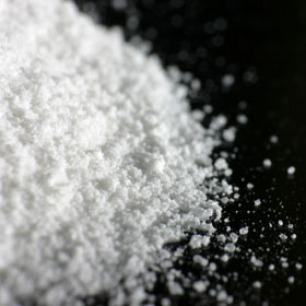
There is growing law enforcement evidence that, in comparison with the period spanning 2002-03 to 2006-07, the supply of cocaine to Australia is relatively high (Hughes, Chalmers et al., 2011). This expansion in supply appears to have coincided with diversification in the trafficking routes to and through Australia (beyond the traditional site of entry - Sydney). Comparison of the general population level 2007 and 2004 NDSHS data and analyses of data from the more timely targeted IDRS and EDRS surveys suggests parallel shifts in the geographical distribution of use. It also appears that the recent expansion in supply has been absorbed by the non-injecting population of cocaine users. This project will use NDSHS data to determine the public health implications of the perceived expansion in the supply of cocaine in Australia since the period spanning 2002-03 to 2006-07.
Dr Francis Matthew-Simmons (formerly NDARC)
This project aimed to determine whether the 2010 patterns of cocaine use in the general population were consistent with 2007 patterns and how the patterns have evolved over the past decade.
Data was pooled from the 1998, 2001, 3004, 2007 and 2010 waves of the NDSHS survey and we explored changes in the population of cocaine users associated with the recent expansion in supply. In particular we were interested in Australia-wide and jurisdictional change in the prevalence, frequency and method of cocaine use.
The analyses have been undertaken and the findings published.
We examined general population trends in cocaine use and harmful practices and use of related stimulants between 1998 and 2010, and conducted age-period-cohort analyses using five repeated cross-sections of Australia's National Drug Strategy Household Survey. The results indicate past year cocaine use prevalence has increased significantly since 2004, to its highest point in the past 12 years; 2.1% in 2010. But frequency of cocaine use has not increased. Moreover, most harmful practices (injecting, high-quantity use) have remained stable. Changes in the cocaine market appear related to changes in the Australian methamphetamine and ecstasy markets, including declining purity of ecstasy. For example, the cohorts of people most likely to exhibit recent cocaine use were also most likely to have used ecstasy and methamphetamine (those born from 1976 to 1984). The findings indicate that an increase in cocaine demand does not necessarily lead to substantial increases in public health harm: and indeed that the public health implications from the recent increase are likely to be negligible. Moreover, the findings suggest changes to either ecstasy or methamphetamine supply may lead to more shifts in demand for Australia's cocaine market.
Chalmers J, Matthew-Simmons F, Hughes CE (2013) ‘The Recent Expansion in the Australian Cocaine Market: Who are the new users and what are the harms?’ Current Drug Abuse Reviews, 6. DOI: 10.2174/1874473706666131205150424



